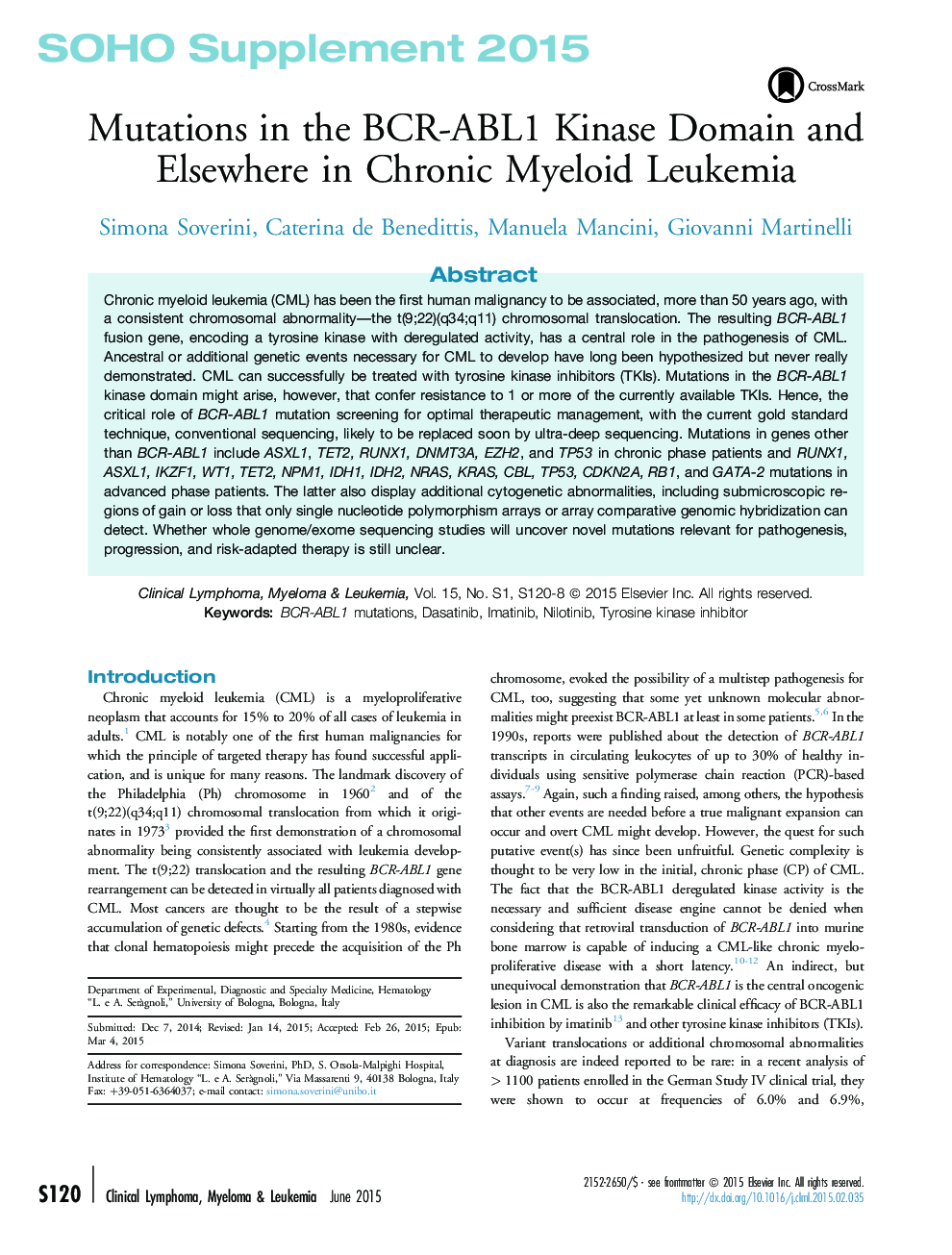| Article ID | Journal | Published Year | Pages | File Type |
|---|---|---|---|---|
| 5883077 | Clinical Lymphoma Myeloma and Leukemia | 2015 | 9 Pages |
Abstract
Chronic myeloid leukemia (CML) has been the first human malignancy to be associated, more than 50 years ago, with a consistent chromosomal abnormality-the t(9;22)(q34;q11) chromosomal translocation. The resulting BCR-ABL1 fusion gene, encoding a tyrosine kinase with deregulated activity, has a central role in the pathogenesis of CML. Ancestral or additional genetic events necessary for CML to develop have long been hypothesized but never really demonstrated. CML can successfully be treated with tyrosine kinase inhibitors (TKIs). Mutations in the BCR-ABL1 kinase domain might arise, however, that confer resistance to 1 or more of the currently available TKIs. Hence, the critical role of BCR-ABL1 mutation screening for optimal therapeutic management, with the current gold standard technique, conventional sequencing, likely to be replaced soon by ultra-deep sequencing. Mutations in genes other than BCR-ABL1 include ASXL1, TET2, RUNX1, DNMT3A, EZH2, and TP53 in chronic phase patients and RUNX1, ASXL1, IKZF1, WT1, TET2, NPM1, IDH1, IDH2, NRAS, KRAS, CBL, TP53, CDKN2A, RB1, and GATA-2 mutations in advanced phase patients. The latter also display additional cytogenetic abnormalities, including submicroscopic regions of gain or loss that only single nucleotide polymorphism arrays or array comparative genomic hybridization can detect. Whether whole genome/exome sequencing studies will uncover novel mutations relevant for pathogenesis, progression, and risk-adapted therapy is still unclear.
Related Topics
Health Sciences
Medicine and Dentistry
Anesthesiology and Pain Medicine
Authors
Simona Soverini, Caterina de Benedittis, Manuela Mancini, Giovanni Martinelli,
